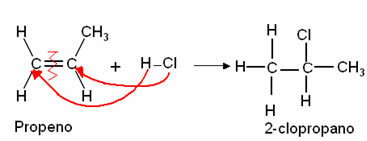Honey is a natural product produced by bees, a group formed by more than 20 thousand species. Currently, the most used honey is that of the bee Apis mellifera, a species that is also responsible for the production of wax and propolis and is native to Europe, Africa and Asia. This product has been used by humans since prehistory.
→ Honey production by bees
Honey, produced by honey bees, is made from nectar from flowers, secretions from other parts of the plant or excretions of insects that suck plants. The characteristics of honey, such as flavor, color and smell, vary according to the flora used and the environmental conditions, in addition, of course, to the species of the bee.
Honeybees swallow a small amount of nectar with each plant visited and store this substance in their transport stomach. The nectar is then mixed with secretions released mainly by the hypopharyngeal glands. In this secretion are found substances such as invertase, glucose, oxidase, catalase and phosphatase, which trigger reactions that transform the nectar into honey.
The bee returns to the hive and regurgitates the contents stored in the honeycomb alveoli, which are structures formed by wax. Honey acquires viscosity and consistency over the days, being later used as food by these animals. To protect the honey in the alveoli, bees produce a thin layer of wax to seal this compartment.
→ Chemical composition of honey

Honey is a food rich in minerals and vitamins
The chemical composition of honey is extremely rich, since it is a food with a vast amount of substances that are very important for human health.
The) Carbohydrates
They correspond, on average, to 74% of the entire chemical composition of honey. That's why honey tastes so sweet. You main sugars in honey they are:
Glucose
Fructose
sucrose
Maltose
B) Vitamins
several are the vitamins present in honey, the main ones being:
Vitamin A
Vitamin B1
Vitamin B2
Vitamin B5
Vitamin B6
Vitamin C
Vitamin H
Vitamin PP
ç) Minerals
Between the various minerals existing, are part of the honey composition:
Calcium
Phosphor
Sulfur
Potassium
chlorine
Iron
Manganese
Copper
Silica
Sodium
d) water
and) Proteins
The proteins in honey are basically made up of the following amino acids:
leucine
isoleucine
Histidine
Methionine
Alanine
Phenylalanine
Glycine
→ Physicochemical properties of honey
All physical and chemical properties of honey depend exclusively on the type (monofloral) or types (polyfloral) of flowers that the bees used to extract the nectar. Among these properties, we can highlight:
Flavor: it is determined by the amount and types of sugars and acids present. It can be sweet, bitter or sour.
-
moisture rate (indicates the amount of water present in the honey): The amount of water in the honey should vary between 16.8 to 20%. This is a determination proposed by the Brazilian legislation, because, if the honey has a higher water content, it can occur greater proliferation of bacteria and, consequently, lead to a fermentation process, making the product unsuitable for the consumption.
Do not stop now... There's more after the advertising ;)
Viscosity (It is the resistance that a fluid offers to the flow, that is, how much it sticks to the walls of the container when it spreads): Comparing honey with water, we notice that it is much more viscous. However, as there are several types of honey in terms of chemical composition, its viscosity can decrease according to the amount of water it contains.
Acidity (quantity of acids present in the fluid): There are several acids present in honey, depending on the type of nectar used and also on the action of bacteria during maturation. Some examples are: glycolic, succinic, malic, acetic, citric, formic, lactic, folic and butyric acids.
ash content (indicates the amount and type of minerals present in honey): According to the legislation, the amount of minerals in honey cannot exceed 1.2%. The types of minerals present, as already highlighted, are linked to the floral source, the environment and production and processing conditions.
Hydroxymethylfurfural (HMF): It is a chemical substance formed by the reaction of sugars and acids present in the composition of honey. Therefore, it continues to form after honey extraction. Legislation only allows the amount of 60 mg of this substance per kilogram of honey. If this content is above, the product should not be consumed.
→ Honey and human health
Honey, in addition to working as a sugar substitute, is a product that has several therapeutic activities, highlighting its actions:
- Antibacterial: Prevents the growth of bacteria;
- Antibiotics: Fight bacterial infections;
- Anti-inflammatory: Prevents or alleviates tissue inflammation;
- Antimicrobial: Kills or inhibits the development of microorganisms;
- Debugging: Purifies the body by eliminating toxic substances and waste;
- Emollient: Softens and leaves skin more flexible;
- Energy: Provides energy;
- Healing: Stimulates the healing process;
- Immunostimulant: Stimulates and strengthens the immune system.
It is noteworthy that honey, in addition to all these benefits, presents a certain toxicological risk. The toxic effect only appears when production and processing are done inappropriately or the plants visited by bees contain toxic substances.
→ Honey production in the country
Honey production in Brazil has been growing a lot in recent years. According to the Brazilian Institute of Geography and Statistics (IBGE), in 2013, Brazil produced 35,365 tons of the product. Also according to the Institute, Rio Grande do Sul stood out in the year as the largest producer, accounting for more than 20% of our country's total production. In second and third place are the states of Paraná (15.7%) and Santa Catarina (13.8%).
By Me. Diogo Lopes Dias and Ma. Vanessa dos Santos
Would you like to reference this text in a school or academic work? Look:
DAYS, Diogo Lopes. "Importance and chemical composition of honey"; Brazil School. Available in: https://brasilescola.uol.com.br/quimica/importancia-composicao-quimica-mel.htm. Accessed on June 27, 2021.



